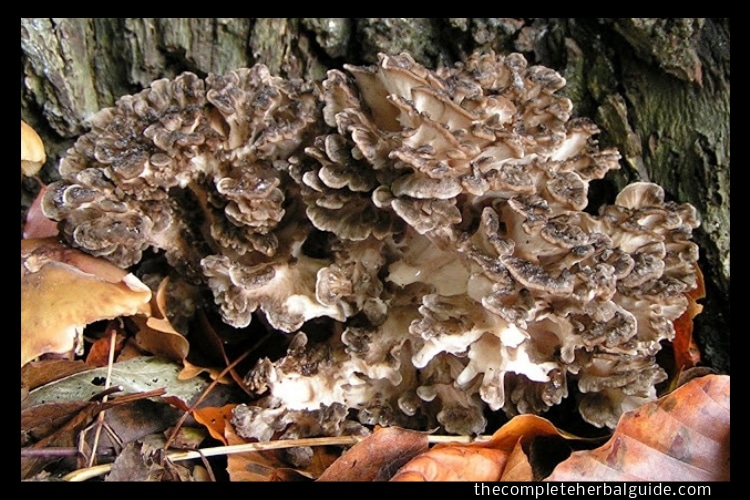
Calendula: Benefits, Medicinal Uses, and Precautions
Properties: anti-inflammatory & antimicrobial
Botanical: Calendula officinalis
Family: Compositae (daisy) – Asteraceae (aster)
Other common names: Marigold, Calandula, Garden Calendula, Garden Calandula, Holigold, Golds, Pot Marigold, Mary Bud, Mary Gowles, Bride of the Sun, Butterwort
Calendula soothes! Its anti-inflammatory and antiseptic qualities have been used for centuries to ease skin infections, ulcerations, bowel problems, hemorrhoids, diaper rash and varicose veins. The herb is also said to reduce fever and treat indigestion, as well as help gallbladder and liver problems. Calendula is also considered a topical anti-inflammatory and widely used in cosmetics for its toning and soothing effects.
Table of Contents
- History
- Beneficial Uses
- Anal tears (anal fissures)
- Diabetic foot ulcers
- Diaper rash
- Peeling lips (exfoliative cheilitis)
- Gum inflammation
- Insect repellant
- Ear infections (otitis media)
- Pressure ulcers
- Skin inflammation due to radiation therapy (radiation dermatitis)
- Thinning of the wall of the vagina (vaginal atrophy)
- Vaginal yeast infection
- Leg ulcers
- Wound healing
- Cancer
- Fever
- Hemorrhoids
- Muscle spasms
- Nosebleeds
- Promoting menstruation
- Treating mouth and throat soreness
- Varicose veins
- Other conditions
- Natural Remedies
- Precautions
History
Calendula, also called Marigold, is an annual or biennial aromatic that is native to the Mediterranean countries, where it was used in early Arabic cultures and in ancient Greece and Rome as a medicinal herb, as well as a colorant for fabrics and an ingredient in food and cosmetics.
The ornamental plants bear orange or yellow flowers with dense petals and are widely grown in gardens in North America and Europe for their beauty (and the fact that they also keep insects away), and the flowers are also extensively cultivated for use in herbal medicine throughout Latin America and Eastern Europe. It is said that plants harvested between June and September are most potent. The leaves and petals of the Calendula/Pot Marigold are edible, with the petals added to dishes as a garnish and in lieu of saffron.
The leaves can be sweet but are more commonly bitter and may be used as, or as part of, a salad. One of the plant’s alternate/common names, Marigold, is said to refer to the Virgin Mary, since Marigolds were traditionally used in Catholic celebrations concerning the mother of Jesus; and the plant received its botanical name and genus, Calendula, from the Romans, who noted the fact that the plants bloomed on the first days or “calends” of every month.
The Calendula was used medicinally in ancient Rome to treat scorpion bites and heal wounds, among many other applications. It is also used in homeopathic medicine (in a gel form) as an herbal antibacterial and topical anti-inflammatory to promote the healing of minor burns, scrapes and skin irritations.
Major constituents of the leaves and stems of the plant include lutein, zeaxanthan, and beta-carotene, and some other ingredients include essential oil, acids (including oleic, linoleic, linolenic, palmitic, p-coumaric, salcylic), phytosterols, carotenoids, vitamins C and E, saponins, calcium, manganese, lycopene, inulin, flavonoids (polysaccharides and terpenoids, which account for much of its anti-inflammatory activity), resin and mucilage.
Beneficial Uses
Anal tears (anal fissures)
Early research suggests that that applying calendula to the affected area may reduce pain in people with anal tears who do not respond to treatment with sitz baths and the medication nifedipine.
Diabetic foot ulcers
Early research shows that using a calendula spray in addition to standard care and hygiene might prevent infection and decrease odor in people with long-term foot ulcer from diabetes.
Diaper rash
Some early research suggests that applying a calendula ointment to the skin for 10 days improves diaper rash compared to aloe gel. But other early research shows that applying calendula cream does not improve diaper rash as effectively as bentonite solution.
Peeling lips (exfoliative cheilitis)
Early research shows that using calendula ointment for 15 days might help stop peeling lips.
Gum inflammation
Early research shows that rinsing the mouth with a specific calendula tincture for 6 months might decrease plaque, gum inflammation, and bleeding by 10% to 18% compared to using water to rinse. Other early research shows that rinsing the mouth with a combination mouthwash containing calendula, rosemary, and ginger for 2 weeks decreases plaque, gum inflammation, and bleeding compared to placebo mouthwash. In fact, it the combination mouthwash seems to work as effectively as chlorhexidine mouthwash.
Insect repellant
Applying calendula essential oil to the skin does not seem to repel mosquitoes as effectively as applying DEET.
Ear infections (otitis media)
Early research shows that applying a specific product that contains mullein, garlic, calendula, and St. John’s wort to the ear for 3 days reduces ear pain in children and teenagers with ear infections.
Pressure ulcers
Early research shows that using a specific calendula product might improve the healing of long-term pressure ulcers.
Skin inflammation due to radiation therapy (radiation dermatitis)
Early research suggests that applying calendula ointment on the skin might reduce radiation dermatitis in people receiving radiation therapy for breast cancer. However, other early research shows that using a calendula cream is no different than petroleum jelly for reducing radiation dermatitis.
Thinning of the wall of the vagina (vaginal atrophy)
Early research suggests that applying a gel containing calendula, Lactobacillus sporogenes, isoflavones, and lactic acid to the vagina for 4 weeks reduces symptoms of vaginal atrophy such as vaginal itching, burning, dryness, and pain during intercourse.
Vaginal yeast infection
Early research shows that applying calendula cream inside the vagina for 7 days does not treat yeast infections as effectively as using clotrimazole cream.
Leg ulcers
Early research shows that applying a calendula ointment to the skin speeds up the healing of leg ulcers caused by poor blood circulation.
Wound healing
Early research shows that applying calendula ointment along with routine care does not improve the healing of the surgical cut of the vagina made during childbirth.
Cancer
Fever
Hemorrhoids
Muscle spasms
Nosebleeds
Promoting menstruation
Treating mouth and throat soreness
Varicose veins
Other conditions
Natural Remedies
Elderberry Calendula Cold and Flu Elixir
The changing of seasons, right around late summer, is the perfect time of year to prepare one of our favorite cold and flu recipes using both calendula and elderberry. I especially enjoy making medicine from fresh plants, so this is the time to make my favorite cold and flu remedy – Elderberry Calendula Cold and Flu Elixir – including both elderberry and calendula, rose hips, orange peel, ginger, and elderflower.
http://herbalacademyofne.com/2014/09/elderberry-calendula-cold-and-flu-elixir/
Homemade Sugar Scrub
You can use this herbal sugar scrub every time you shower, or you can alternate it with soap as often as you’d like. Gently massaging it into your skin feels great and the oils will leave your skin soft, nourished, and glowing.
http://herbalacademyofne.com/2014/07/how-to-make-a-homemade-sugar-scrub-with-calendula/
Herbal Deodorant
If you too have been struggling with finding the perfect natural deodorant that keeps you from stinking, here it is.
http://herbalacademyofne.com/2014/08/an-herbal-deodorant-that-works-finally/
Calendula Balm for Diaper Rash
Another easy balm recipe, which is a great use for diaper rash!
http://shalommama.com/calendula-balm
Precautions
Pregnancy and breastfeeding
Don’t take calendula by mouth if you are pregnant. It is LIKELY UNSAFE. There is a concern that it might cause a miscarriage. It’s best to avoid topical use as well until more is known. There is not enough reliable information about the safety of using calendula if you are breastfeeding. Stay on the safe side and avoid use.
Allergy to ragweed and related plants
Calendula may cause an allergic reaction in people who are sensitive to the Asteraceae/Compositae family. Members of this family include ragweed, chrysanthemums, marigolds, daisies, and many others. If you have allergies, be sure to check with your healthcare provider before taking calendula.
Surgery
Calendula might cause too much drowsiness if combined with medications used during and after surgery. Stop taking calendula at least 2 weeks before a scheduled surgery.
Allergic Reactions
When using topically, some people may show an allergic reaction, and it is wise to test a patch of skin before widespread use.
Calendula Overuse
Medications that cause sleepiness are called sedatives. When taken internally, Marigold/Calendula may increase the sedative effects of medications taken for anxiety and insomnia. Caution should be exercised if using sedatives when driving or operating machinery. Taking calendula along with sedative medications might cause too much sleepiness. Some sedative medications include clonazepam (Klonopin), lorazepam (Ativan), phenobarbital (Donnatal), zolpidem (Ambien), and others.
Calendula is a member of the daisy/aster family, and those with allergies to these plants or ragweed should avoid Calendula. Overuse/large amounts (more than the recommended dosage) may cause nausea, vomiting, and headache.






